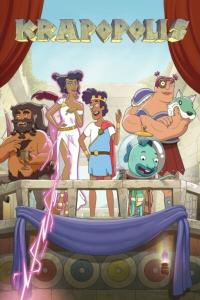Torrent details for "History of Hungary: A Captivating Guide to Hungarian History - (BookRAR)" Log in to bookmark
Controls:
Language:
 English
EnglishTotal Size:
3.34 MB
Info Hash:
6f04658ace4dd2edaaa9a49a21a867a0b4ebd29a
Added By:
Added:
12-01-2022 14:06
Views:
276
Health:

Seeds:
12
Leechers:
0
Completed:
901

Description
Hungary is more than just vampire stories and cheesy violin-playing waiters named “Laszlo.” It has a rich history that goes back to the first wild Magyar horsemen, who arrived there in the late 9th century. For a time, the Magyars were both mercenaries and raiders, a horse-bound version of the Vikings in France and Britain. They terrorized the populations of Austria, Germany, and even Italy and eastern France.
Since the time of the Magyars, Hungary has been an important crossroads of goods, ideas, and armies. For a considerable time, about two-thirds of Hungary was controlled by the Ottoman Empire and the Austrian Empire, and that occupation had a serious economic, military, and cultural impact on the country.
In 1867, in response to the growing power of Prussia (the German-speaking state around which modern Germany was formed) and Russia, the Austrian Habsburg emperor offered its very independent-minded province of Hungary an “equal share” of the empire. The Austro-Hungarian Empire was born.
After the Austro-Hungarian defeat in WWI, Hungary became an independent nation. Unfortunately, its location makes it prey to the larger powers in the area, and during WWII, Hungary allied with Hitler. Following the Soviet invasion during the war, Hungary became a hardline communist state under Soviet control.
The story of the 1956 Hungarian Revolution is a sad one, but in 1989, Hungary broke free from Soviet/Russian influence. Since that time, the country has attempted to walk a fine line between the West and the East.
Inside Captivating History’s History of Hungary, you’ll discover:
The nomadic clans of the Magyar people who moved from central Asia into the areas we call Hungary today and its surroundings
How the Magyars rapidly changed from a semi-nomadic tribal organization, who terrified the people so much that some prayed to God to relieve them of the “curse of the Magyars” in much the same way that Western monks prayed from relief from the Vikings, to a settled Christian kingdom in the early 1000s.
That the first king of a unified Hungary is now the patron saint of the nation, Saint Stephen.
That despite his “saintliness,” Stephen often tortured his enemies and had their eyes gouged out
The story of Matthias I, known as the “Raven King” or “Matthias Corvinus” for his symbol and his belief that his family had Roman roots in the aristocrat Corvinii family of ancient Rome.
The dark day of August 29th, 1526, when the Hungarians were defeated by the Ottomans at Mohács, which changed Hungarian history forever.
How the Austro-Hungarian Empire began
Hungary’s part in WWI, WWII, and the Holocaust
The revolt of 1956
The end of communism in 1989
Book Details
Language: English
Published: 2021
ISBN: 1637165307
Format: EPUB















































